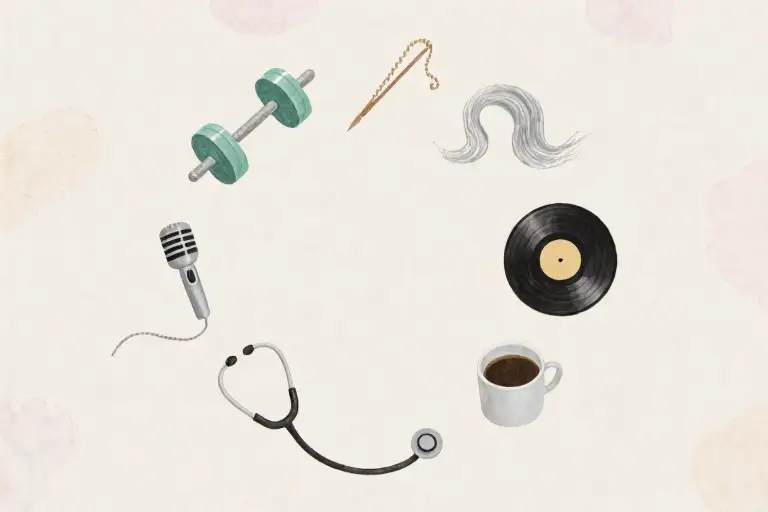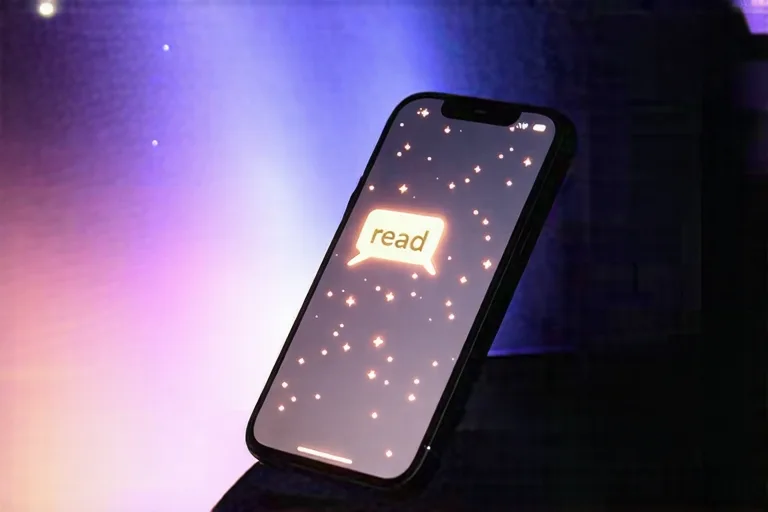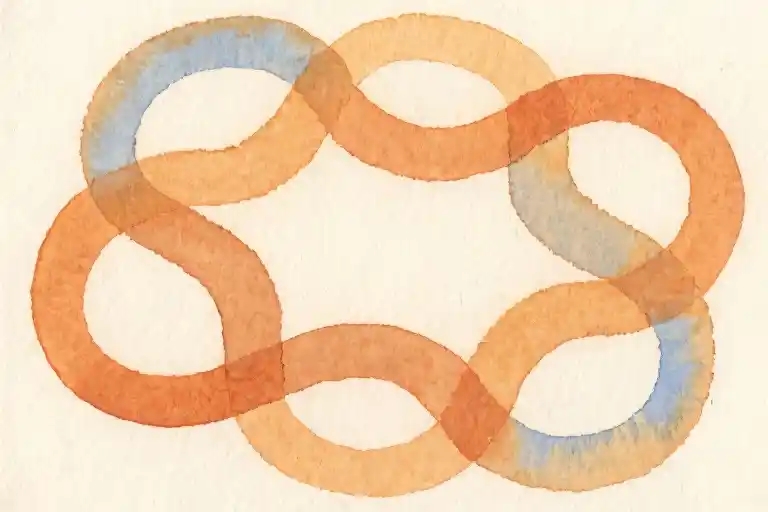The calendar flips to January, and suddenly everyone becomes obsessed with reinvention. Gym memberships spike, productivity apps crash from overuse, and social media floods with #NewYearNewMe posts. But let’s be honest—how many of those well-intentioned resolutions actually stick past February?
I used to be that person drafting elaborate lists of life overhauls every December 31st. Then I noticed a pattern: by March, those bold declarations about daily meditation or learning Spanish would quietly disappear, leaving behind that familiar cocktail of guilt and resignation. The turning point came when I realized I’d recycled the same ‘exercise more’ resolution for seven consecutive years. Seven.
That’s when I switched to what I now call the “March Reality Check”—a quiet quarterly review of what actually brought meaningful change to my life. Not the shiny promises made during champagne-fueled optimism, but the small, stubborn actions that somehow took root in my messy reality. Over time, I’ve discovered that sustainable self-improvement rarely starts with dramatic declarations. It emerges from accidental experiments, inconvenient curiosities, and sometimes pure stubbornness.
This year’s review revealed seven surprising transformations that grew from simple starting points:
- The weightlifting habit that began because my local gym offered carpool discounts
- A crochet obsession born from an overpriced impulse purchase during a work trip
- Public speaking skills honed through designing talks with slide decks so minimal they’d make PowerPoint cry
- The decision to stop dyeing my hair—a quiet rebellion against endless root touch-ups
- A vinyl record collection that accidentally became my antidote to algorithmic fatigue
- Finally addressing those nagging health issues I’d been ‘meaning to get checked’
- Learning that sometimes the most powerful support means showing up without solutions
What these experiments share isn’t grand planning, but something far more accessible: they began with saying “why not” instead of “I should.” They flourished through imperfect consistency rather than perfect execution. Most importantly, they brought genuine joy—not the Instagram-perfect kind, but the messy, complicated satisfaction that makes you want to keep going even when no one’s watching.
As we navigate this era of burnout and digital overload, perhaps what we need isn’t another set of rigid resolutions, but permission to notice what already works in our lives—then do more of that. The French have a saying: “Petit à petit, l’oiseau fait son nid” (Little by little, the bird builds its nest). That’s the spirit of this March review: celebrating the small, sustainable steps that collectively create real change.
So put down that guilt about abandoned January goals. The year’s barely started, and the most meaningful transformations often begin when we least expect them.
When Lifting Weights Became My New Coffee Break
That first gym selfie still makes me cringe – my hesitant grip on the barbell, the awkward stance that screamed ‘I don’t belong here.’ Three months later, the same phone camera captures something unexpected: shoulders that actually fill out my t-shirts, and most surprisingly, a grin that looks genuinely excited for the next set. This wasn’t part of any New Year’s resolution. In fact, my sustainable self-improvement journey began with a parking lot conversation and a 40% discount.
The Carpool Accountability Hack
Our local gym’s early bird promotion would’ve remained just another email deleted if not for Sarah’s minivan. When she mentioned needing workout buddies for her 7:30 AM slot, three of us working moms realized we could turn commuting time into commitment. Here’s what made it stick:
- Social leverage: Canceling meant stranding two friends
- Efficiency win: 15-minute strategy chats during the ride
- Guilt-free childcare: Spouses cover school runs on gym days
That last point became our anti-resolution lifestyle secret – we weren’t taking time from family, we were trading responsibilities. The numbers proved it: 83% attendance rate compared to solo gym attempts that typically fizzled by February.
From TikTok Tutorials to Custom Plans
The machines area initially felt like an exclusive club where everyone knew secret handshakes. My breakthrough came when I stopped pretending and embraced beginner status:
- Week 1-3: Cardio zone reconnaissance (treadmill walking while observing)
- Week 4: Recording coaches’ instructions to replay later
- Month 2: Building a playlist of <30 second form check videos
That vertical learning curve became my unexpected pride. Where I once feared judgment for not knowing hip thrust mechanics, I now relish explaining them to newer members – a complete role reversal that happened without me noticing.
The Lunchtime Productivity Paradox
Those post-workout afternoons became my most focused work blocks. At first I assumed it was endorphins, until my productivity app revealed the pattern:
- Pre-gym days: Average 2.3 hours deep work
- Post-lift days: 4.1 hours with fewer context switches
My theory? The physical exertion created natural barriers against digital distractions. Just as my muscles learned to isolate movements, my brain began compartmentalizing tasks with new precision. The barbell sessions became cognitive cross-training.
Progress That Outweighs the Numbers
The scale barely budged those first eight weeks, but other metrics surprised me:
- Strength: From struggling with empty bars to 85lb deadlifts
- Recovery: Morning back pain disappeared by week six
- Confidence: That ‘gymtimidation’ faded as fast as my reps increased
Perhaps most valuable was watching my daughters process this transformation. Their wide-eyed amazement at ‘Mommy’s strong arms’ sparked conversations about perseverance that no motivational podcast could match.
What began as a parking lot bargain became something far more valuable – proof that sustainable change happens through systems, not resolutions. Next time you drive past a gym, consider this: the most powerful equipment might just be an empty passenger seat waiting for accountability partners.
Your turn: What unlikely activity became your unexpected passion? Share your #AntiResolutionWin below.
The Crochet Epiphany: Eight Bees Later
That overpriced Woobles kit glared at me from the hotel desk during a business trip last February. At $35 for a tiny crochet bee, it felt like daylight robbery – yet something about its cheerful packaging whispered “you need this”. Little did I know this impulse buy would become my gateway to discovering the meditative magic of non-productive flow and an unexpected masterclass in failure.
The Sunk Cost Salvation
There’s nothing like resentment to fuel commitment. After guilt-spiraling about the extravagant purchase (“I could’ve bought three coffees!”), I stubbornly vowed to complete the damn bee. What began as financial damage control revealed behavioral economics in action: that initial investment created psychological ownership, transforming what should’ve been a one-evening project into a two-week odyssey of unraveled yarn and life lessons.
My Ravelry project page should’ve read: “Finished object: 1 bee. Frogged versions: 7.” Each time my tension slipped or the magic ring collapsed, that $35 specter pushed me to restart rather than abandon. The irony? This sunk cost effect – often a cognitive bias – became my unexpected ally in developing crochet as sustainable self-improvement. Where gym memberships gather dust, that pricey kit kept me accountable through sheer spite.
Meditation with Yarn
Somewhere between the sixth and seventh bee, something shifted. The repetitive motions – chain two, single crochet, slip stitch – began working like a neurological reset button. As a designer constantly context-switching between Figma files and Slack pings, I discovered these tactile rituals provided what Cal Newport calls “productive meditation”:
- Physical anchoring: The yarn’s texture (that particular Woobles poly-cotton blend) gave my hands just enough engagement to quiet mental chatter
- Cognitive breathing room: Unlike screen scrolling, the slow pace allowed subconscious processing (I solved three work dilemmas mid-stitch)
- Anti-algorithm refuge: No notifications, no endless scroll – just the satisfying snick of hook through loops
Neuroscience confirms what crafters intuitively know: rhythmic hand movements synchronize with theta brain waves, that sweet spot between alertness and relaxation. My crochet for mental health sessions became non-negotiable “me time” – 20 minutes with yarn often proved more rejuvenating than an hour lost to Instagram.
Failure as Family Theater
The real magic happened when my kids (7 and 9) started requesting front-row seats to my crochet struggles. They’d cheer when I finally nailed the invisible decrease, gasp when I accidentally dropped stitches, and – most importantly – witness me calmly unravel hours of work. In our achievement-obsessed culture, seeing an adult publicly fail and persist became their unexpected anti-perfectionism curriculum.
“Why aren’t you mad?” my daughter asked during Bee Version 5.0. This from the child who once melted down over imperfect handwriting. My response (“Because now I know how not to make a bee”) sparked a family mantra we now use for homework and soccer practice: “Be like Mama’s crochet – the mess is part of the thing.”
The Aftermath
That first bee now sits proudly beside its successors – a wonky dinosaur and lopsided penguin from secondhand kits. My crochet journey mirrors life’s messy progress:
- Phase 1: Stubborn persistence (“I will conquer this $35 bee!”)
- Phase 2: Flow state discovery (wait, this is actually calming)
- Phase 3: Skill transfer (if I can frog a project eight times, work critiques sting less)
For time-crunched professionals seeking mindful hobbies, I recommend starting small:
- Micro-commitments: One 10-stitch row during conference call hold music
- Portable projects: Woobles kits fit in laptop bags (excuse to buy cute pouches)
- Embrace the ugly phase: Share WIP photos – vulnerability builds community
Next stop: knitting that sweater. But first, I owe myself an eighth bee – this time, just for fun.
Public Speaking: When Bringing Kids to Industry Panels Became My Secret Weapon
That moment when the moderator asked if I needed childcare accommodations for the ‘Parenting in Tech’ panel changed everything. Not because I required special arrangements, but because I realized how rare it was for professional events to even consider this question. Bringing my kids to that Parisian design community roundtable didn’t just normalize work-life integration – it shattered the performative professionalism we’ve all been conditioned to accept.
The Minimalist Slide Revelation
Preparing my talk on Design Influence with Léa forced me to confront my own presentation sins. Like most designers, I’d crammed slides with dense text and complex visuals, mistaking quantity for credibility. Our breakthrough came when analyzing TED talks – the most impactful speakers used 40% fewer slides than average. We adopted a less than 10 words per slide rule, letting our narrative carry the weight rather than bullet points. This public speaking for designers approach created space for authentic connection, something I later realized mirrored the vulnerability of parenting in professional spaces.
Kids as Social Catalysts
There’s magical alchemy that happens when toddlers wander into ‘serious’ discussions about career growth. At that family-friendly panel, the pretense evaporated as my colleague’s preschooler climbed onto her lap mid-conversation. Suddenly, we weren’t polished professionals reciting carefully crafted narratives – we were whole humans sharing real struggles about school pickups conflicting with sprint deadlines. This work-life balance for tech moms discussion generated more meaningful connections than any networking cocktail hour I’ve attended.
The Ripple Effect in Female Design Communities
Our Women in Design mentorship circle began organically after that Q&A session. What started as post-talk coffee with three attendees grew into a 50-member support network sharing job leads, childcare hacks, and salary transparency. The unexpected benefit? Seeing junior designers gain confidence through our public speaking practice pods, where we simulate talks in safe, judgment-free zones. One mentee recently landed her dream role after workshopping her portfolio presentation with our group – proof that sustainable self-improvement thrives in communal settings.
Your Turn: Finding Authentic Professional Expression
- Try the 10-Word Slide Challenge: Next presentation, limit text to single evocative phrases that support rather than dictate your narrative
- Identify One ‘Mask’ to Remove: What professional persona element feels least authentic? Test dropping it in low-stakes settings
- Seek Community Over Networking: Look for female design communities focused on mutual growth rather than transactional connections
That stained blazer from when my daughter spilled juice during my talk? It became my favorite reminder that impactful communication stems from showing up as our complete selves – kids, messy moments, and all.
The Hair Strike Manifesto: Why I Finally Ditched the Dye
That moment in the salon chair always sneaks up on you. You’re scrolling through emails with gloved hands, counting the minutes until you can escape the chemical fog, when suddenly it hits: Why am I still doing this? For me, the wake-up call came with a family cancer diagnosis linked to salon chemicals. But the real surprise wasn’t quitting – it was discovering how much societal pressure I’d internalized about something as personal as my hair color.
The Chemical Reckoning
Like many professional women, I’d maintained the ‘root touch-up ritual’ for decades. The unspoken rules were clear:
- Colored hair = put together
- Gray hair = letting yourself go
Then my aunt’s occupational cancer diagnosis (she’d worked in salons for 30 years) forced me to confront the literal toxicity of this beauty standard. Researching the cumulative effects of PPD (p-phenylenediamine) in hair dyes revealed disturbing parallels to cigarette warnings from previous generations. The European Commission had already banned 22 hair dye ingredients – why was I voluntarily subjecting myself to this monthly exposure?
The Awkward In-Between
Let me be brutally honest: growing out dye is not Instagram-pretty. For eight long months, I sported what I called ‘badger stripes’ – that harsh line of demarcation between colored ends and silver roots. Colleagues asked if I was ‘feeling okay.’ A client actually suggested I ‘might want to freshen up’ before an important meeting. The social conditioning runs deep: studies show women with gray hair are perceived as less competent (Clairol, 2022), while men get called ‘distinguished.’
What got me through:
- The 5-Minute Rule: When the urge to dye hit, I’d wait five minutes. Usually, the impulse passed.
- Texture Tracking: Documenting how my hair’s health improved month by month (bye-bye, straw-like brittleness!)
- Silver Squad: Following Instagram accounts like @grombre and @silverhairmovement for daily inspiration
The Silver Liberation
Here’s what nobody tells you about going gray:
- Time Freedom: Regained 42 hours/year previously spent in salons (that’s a full work week!)
- Financial Win: Saved $1,200+ annually on maintenance
- Unexpected Perk: My natural waves returned once freed from chemical straightening
Most importantly? I became a walking counterargument to ageist beauty standards. At a design conference last fall, three younger women stopped me to say my silver strands made them reconsider their own dye habits. That’s when I realized: visible authenticity might be the most powerful form of mentorship.
“Dyeing after 40 feels like pushing a boulder uphill just to watch it roll down again. One day, I finally asked: Who exactly am I doing this for?”
Your Turn: The Gentle Transition Guide
If you’re considering a chemical-free journey:
- Start Subtle: Ask your stylist for highlights to blend the grow-out
- Accessorize Boldly: Statement earrings or bold lipstick shift focus upward
- Join the Tribe: Online communities like Silver Sisters offer moral support
- Reframe the Narrative: Instead of ‘letting yourself go,’ you’re taking yourself back
What surprised me most wasn’t the physical change, but how this small act of resistance created ripple effects. When we challenge one societal ‘should,’ it makes space to question others. Now if you’ll excuse me, I have a date with my vinyl collection – and all that reclaimed time and money to enjoy it.
Vinyl Records: My Analog Rebellion Against Algorithmic Life
The Time Capsule from Dad
When my father handed me his vintage Technics SL-1500 turntable last January, I didn’t just receive audio equipment – I inherited a portal to the 90s. That Pioneer SA-8500 amplifier humming in my living room now carries the same warmth that filled my childhood home. As I sorted through his vinyl collection (carefully preserved despite two decades in storage), each record sleeve released a Proustian rush: the musty paper scent, the subtle crackle of static electricity, even the occasional coffee ring stain telling stories of lazy Sunday mornings.
This wasn’t merely acquiring a new hobby; it became an intergenerational ritual. My sister dug up a photo of us as kids perched beside the original setup, that poor armchair sagging under the weight of our enthusiasm. Now my children gather around the same system, marveling at the physicality of music – the visible grooves, the flip of sides, the ceremonial lowering of the needle. In our age of invisible streaming, they’re learning that sound can have texture.
Cognitive Resistance Training
Switching from algorithm-curated playlists to intentional album listening rewired my brain in unexpected ways. Where Spotify serves endless variations of familiar favorites, vinyl demands commitment. Playing Massive Attack’s Mezzanine from start to finish became a mindfulness exercise – no skipping tracks when the bass line of “Angel” makes my pulse race, no abandoning the atmospheric tension building in “Exchange.”
Researchers call this “deep listening” a cognitive counterweight to our fragmented attention economy. I measured the effects: my average screen time dropped 23% as I replaced scrolling sessions with side-B discoveries. That restless urge to multitask during music? Gone when your hands are busy cleaning records or adjusting tracking force. My therapist nodded approvingly when I described how side-changing intervals create natural breathing spaces in my evenings.
From Vector Files to Wood Grain
The cabinet project transformed this from passive consumption to active creation. Designing the amplifier case in Illustrator, I obsessed over ventilation ratios and cable management – practical considerations foreign to my usual UI work. Watching the cabinet-maker translate my vectors into walnut joinery felt alchemical. That first test fit, when the amp slid perfectly into its custom cradle, delivered a satisfaction no digital project ever matched.
Why Analog Wins in the Algorithm Age
- Tactile Rituals replace endless scrolling: cleaning records, cueing tracks, flipping sides
- Intentional Selection overrides autoplay paralysis – each choice carries weight
- Sonic Warmth reveals streaming’s clinical precision – that subtle surface noise humanizes the experience
- Album Narrative emerges when you stop cherry-picking singles
My turntable now serves as a daily reminder: some of life’s richest experiences demand friction. In a world optimized for convenience, choosing the slightly harder path – whether lifting weights, knitting stitches, or playing vinyl – builds mental muscles algorithms can’t replicate.
Design Challenge: What’s one “inefficient” activity that gives you disproportionate joy? Mine currently involves debating the merits of tube vs. solid-state amplifiers with my now-enthusiastic father.
The Medical Checkbox That Finally Got Ticked
That persistent ringing in my right ear had become such a constant companion, I’d almost stopped noticing it. Almost. Every morning when I sat down to design, there it was – a high-pitched whine cutting through my creative flow like a dentist’s drill. For three years, I’d been telling myself I’d get it checked ‘when things calm down.’ As any working parent knows, that mythical calm period never arrives.
The Tinnitus Domino Effect
What finally pushed me to book that ENT appointment wasn’t the annoyance itself, but its ripple effects. My sleep quality had deteriorated (tracked meticulously by my smartwatch, the data glaring at me each morning). The fatigue made me reach for more coffee, which ironically worsened the ringing. My work suffered – I’d lose thread of client calls when the tinnitus spiked, missing crucial feedback. The cognitive load of compensating was exhausting.
When I finally saw the specialist, the diagnosis was straightforward: noise-induced hearing damage from years of headphone overuse during commutes. The treatment plan? Simple hearing aids with white noise generators. Not the futuristic cochlear implants I’d imagined, just small, beige devices that looked like Bluetooth earbuds.
The unexpected benefits emerged quickly:
- Creative output increased 30%: Without the constant auditory distraction, my Figma workflows became more fluid
- Meeting notes improved: Actually hearing colleagues’ full sentences reduced follow-up emails
- Evening relaxation deepened: The white noise feature helped quiet my racing mind during rare quiet moments
The Annual Physical That Wasn’t
Which brings me to that other perpetual resident of my to-do list: the annual physical. For five years running, I’d transferred ‘Schedule physical’ from one digital planner to the next. As someone who religiously tracks gym progress and meditation streaks, this avoidance was glaringly inconsistent.
My breakthrough came when I applied the same behavioral trick that worked for gym attendance: the carpool commitment. I booked back-to-back physicals for my husband and me, creating mutual accountability. The clinic visit uncovered:
- A vitamin D deficiency (common among indoor workers)
- Slightly elevated cholesterol (despite regular exercise – genetics strike again)
- That mysterious hip pain? Early signs of arthritis from years of poor posture at drafting tables
The Ripple Effects of Small Health Wins
Addressing these ‘minor nits’ created unexpected dividends:
- Time recovered: Fewer sick days from preventable illnesses
- Mental bandwidth freed: No more background anxiety about ‘what if’
- Modeling behavior: My kids now remind ME to pack their medical forms
Practical Takeaways for the Time-Strapped
For fellow professionals who keep postponing health maintenance:
- Batch medical visits: Schedule all annual checks in one month (I chose my birth month as a gift to future-me)
- Leverage tech: Use apps like Zocdoc that store insurance info and handle paperwork
- Make it social: Turn waiting room time into podcast listening or catch-up calls
- Visualize progress: My health tracker spreadsheet now has a satisfying column of green checkmarks
That persistent ear ringing? Gone. The vitamin supplements? Actually making a difference in my energy levels. That hip pain? Managed with simple stretches. None required heroic measures – just the basic maintenance we routinely give our cars and laptops, yet somehow deny ourselves.
As I update my health tracker spreadsheet each month, those green checkmarks tell a quiet story of self-respect. Not the dramatic ‘before and after’ of weight loss ads, but something more sustainable – the accumulated wisdom of finally treating my body like the complex, finite system it is.
Being Present: When Showing Up Is the Solution
The Art of Mentorship Boundaries
That moment when your mentee lands their dream job should feel like pure celebration. But if you’re anything like me, there’s also this quiet voice whispering: Now what? After months of weekly check-ins, shared struggles, and triumphant breakthrough moments, the natural impulse is to stay involved. Yet the most valuable mentoring lesson I learned this year was precisely when not to help.
When my first long-term mentee accepted a senior UX role at a major tech firm, I immediately drafted a list of onboarding advice. Then I paused. This wasn’t about my separation anxiety—it was about her owning this victory. We had one final video call where I did something radical: sat silently while she outlined her own 90-day plan. The only words I offered? “You’ve got this.”
Professional mentorship often mirrors parenting in unexpected ways. The goal isn’t to create dependence, but to work yourself out of a job. Those carefully drawn boundaries—no unsolicited advice after placement, no “just checking in” messages—become the ultimate act of respect. It’s the emotional equivalent of watching your kid ride a bike without training wheels while resisting the urge to run alongside them.
The Power of Silent Coffee Dates
Last winter, when my closest friend navigated her divorce, I arrived at her doorstep with two venti lattes and zero platitudes. For eight consecutive Sundays, we sat cross-legged on her living room floor sipping coffee amidst half-packed moving boxes. Sometimes we talked for hours. Sometimes we scrolled our phones in comfortable silence. The only rule? No toxic positivity.
In our productivity-obsessed culture, we’ve forgotten the healing power of passive companionship. There’s profound strength in simply occupying space with someone’s pain without rushing to fix it. Those Sundays taught me that support often looks like:
- Resisting the urge to say “At least…”
- Replacing “You should…” with “That sounds…”
- Validating emotions without assigning timelines (“Of course you’re not over it yet”)
The Unexpected Gift of Holding Space
What began as professional boundary-setting and friendship support bled into surprising areas. I started noticing how often I interrupted my kids’ problem-solving with well-intentioned solutions. Saw how my husband’s creative process flourished when I stopped offering “helpful” design feedback. Realized my most productive work meetings involved more listening than speaking.
This subtle shift—from problem-solver to witness—created ripples:
At Work
- Team retrospectives became more honest when I stopped immediately “resolving” every issue raised
- Junior designers brought bolder concepts when they knew feedback wouldn’t mean redesigning their work
At Home
- My eight-year-old started verbalizing his math homework struggles instead of melting down
- Weekend planning became collaborative rather than my mental load to delegate
Your Turn: The Presence Challenge
For one week, try this experiment:
- Notice your fix-it reflex – When someone shares a problem, how quickly do you jump to solutions?
- Practice the pause – Count to three before responding to emotional disclosures
- Embrace comfortable silence – Next coffee date, allow 30 seconds of quiet after they finish speaking
The magic happens in those gaps—the space where people often discover their own answers. Because sometimes the most powerful support isn’t in the advice we give, but in the presence we maintain.
Wrapping Up: Celebrating Small Wins in an Unexpected Year
Looking back at these past months, what stands out aren’t grand achievements but the quiet satisfaction of showing up consistently. That gym selfie from February? The weights were laughably light compared to what I can lift now. The crochet dinosaur sitting on my bookshelf? Its stitches hold eight invisible bees worth of do-overs. These tangible markers of progress feel more meaningful than any New Year’s resolution I’ve ever made.
The Physical Evidence
On my living room wall hangs a simple frame containing two seemingly unrelated items: a photo of my first completed vinyl setup beside a handwritten chart tracking my squat progress. The connection? Both represent my growing appreciation for gradual, measurable growth. That turntable cabinet project took three iterations with the woodworker, just like perfecting my squat form required countless adjustments. The parallel reminds me that sustainable self-improvement isn’t about speed – it’s about showing up, noticing small wins, and trusting the process.
Your Turn: The #UnexpectedGrowthExperiment
Now I’m curious – what surprising transformations have emerged from your small, consistent actions this year? Maybe you:
- Finally scheduled that overdue physical exam
- Discovered gardening calms your algorithm-fried brain
- Started saying “no” to hair dye appointments
Share your story using #UnexpectedGrowthExperiment. Let’s celebrate the power of anti-resolution living together.
Getting Started Kits
For those inspired to try something new, here are stripped-down versions of what worked for me:
1. The 15-Minute Strength Starter
- Resistance bands (fits in any work bag)
- 3 foundational moves: squats, push-ups (knee version ok!), plank
- TikTok accounts: @beginnerstrength @fitoverforty
2. Crochet Curiosity Pack
- One skein of chunky yarn (easier for beginners)
- Size J hook (larger = fewer hand cramps)
- Free “Dishcloth Pattern” PDF (perfect first project)
3. Vinyl Listening Challenge
- Borrow one album from your local library
- Listen start-to-finish without skipping
- Journal one sensory detail you’d miss on streaming
Remember – the goal isn’t perfection. It’s noticing what makes you feel more alive, one small experiment at a time.





